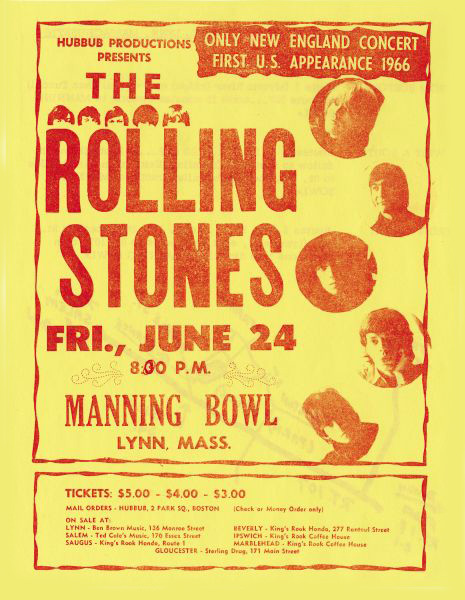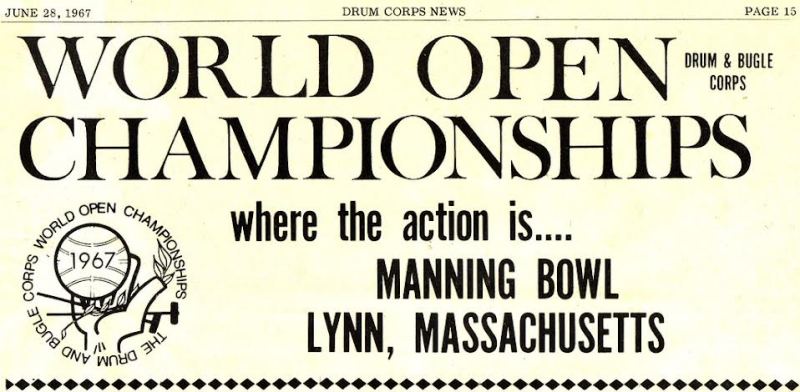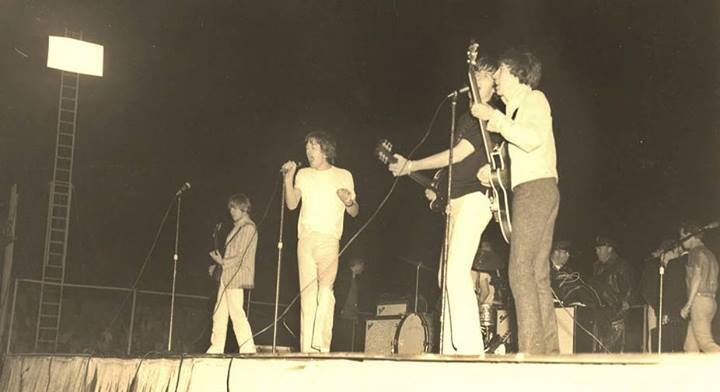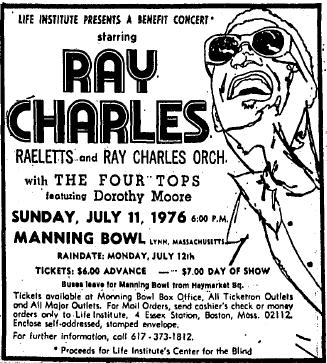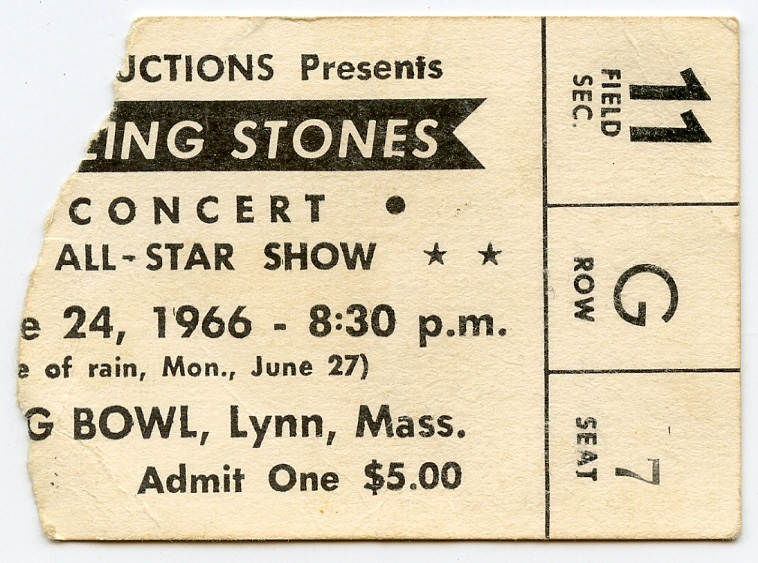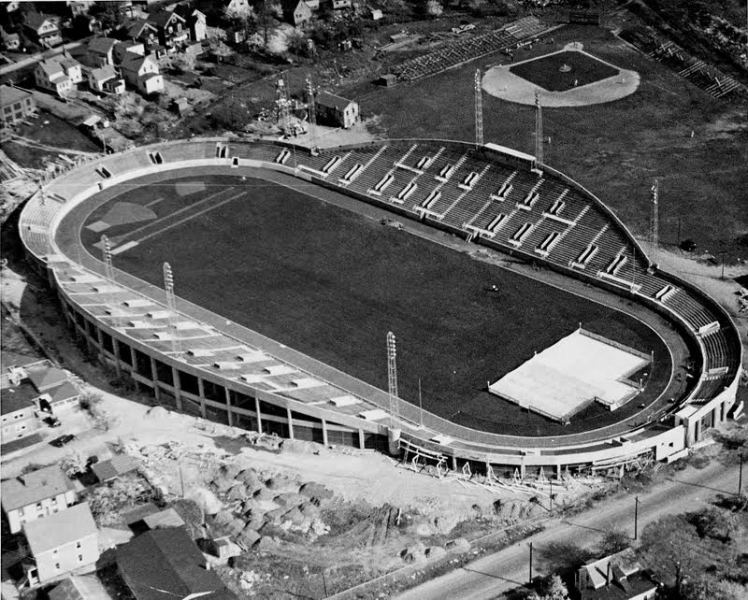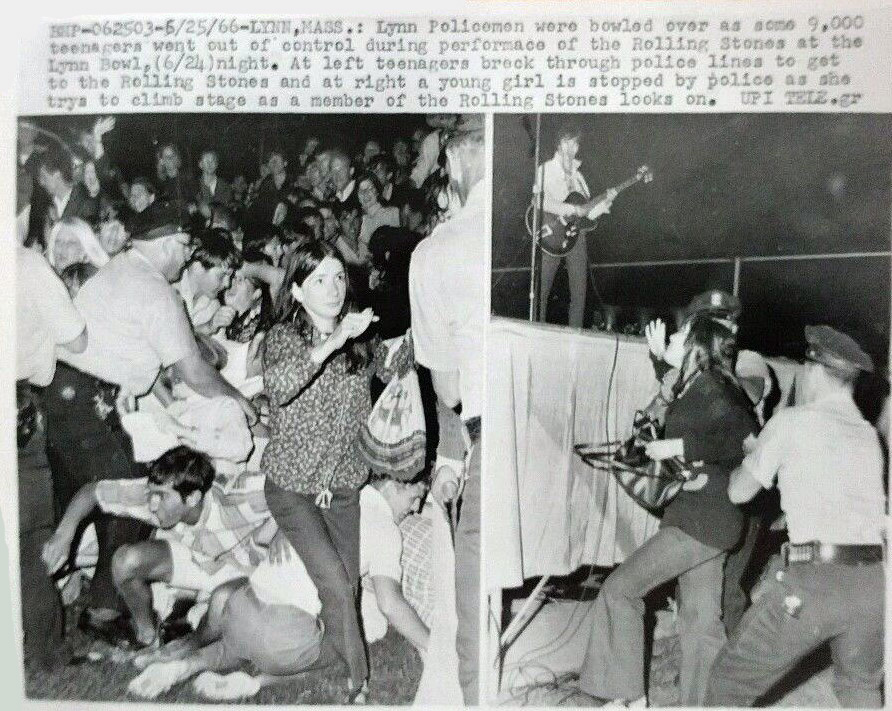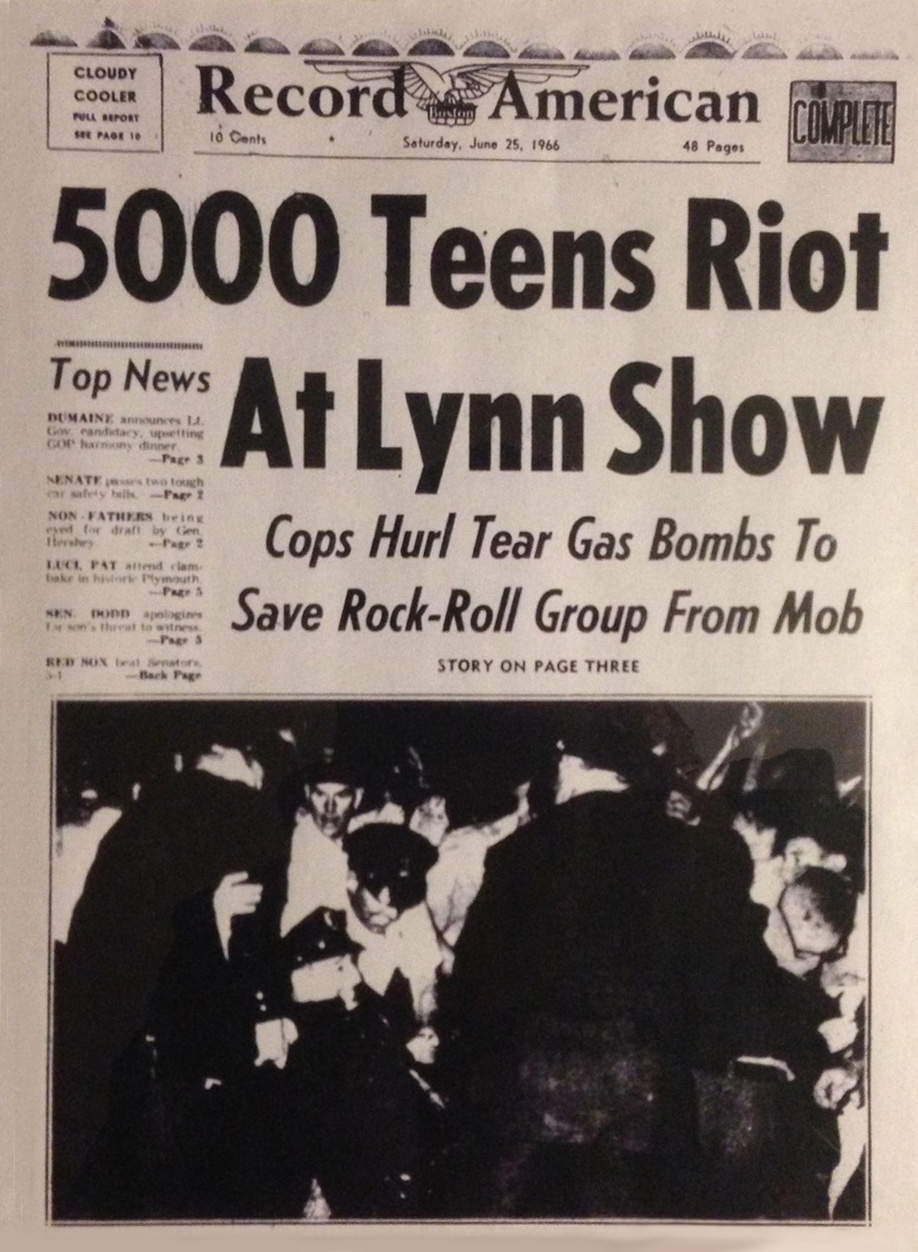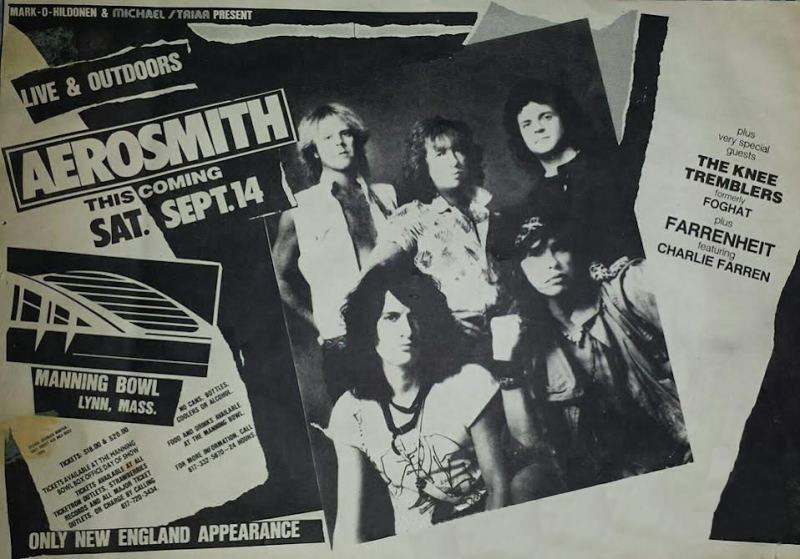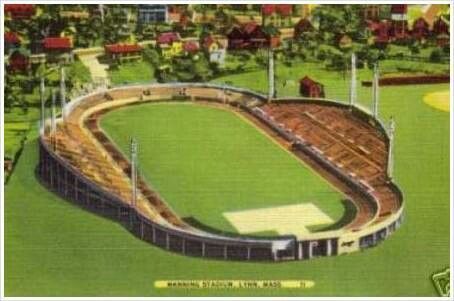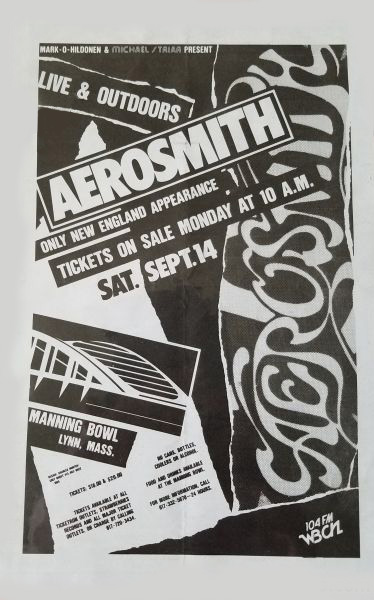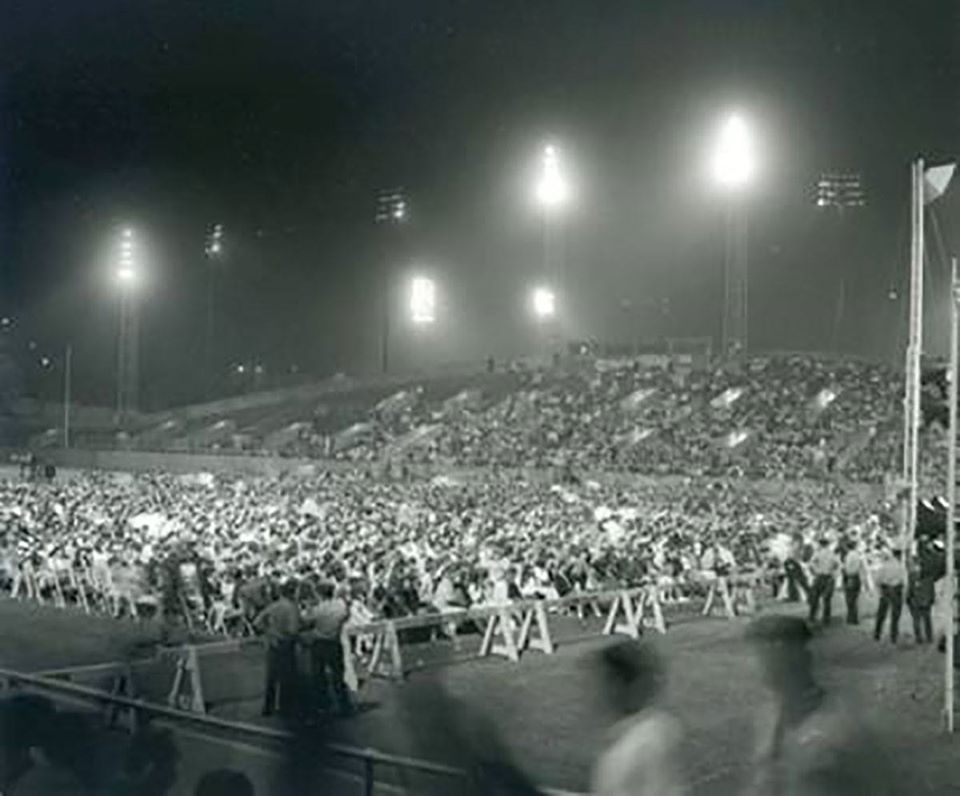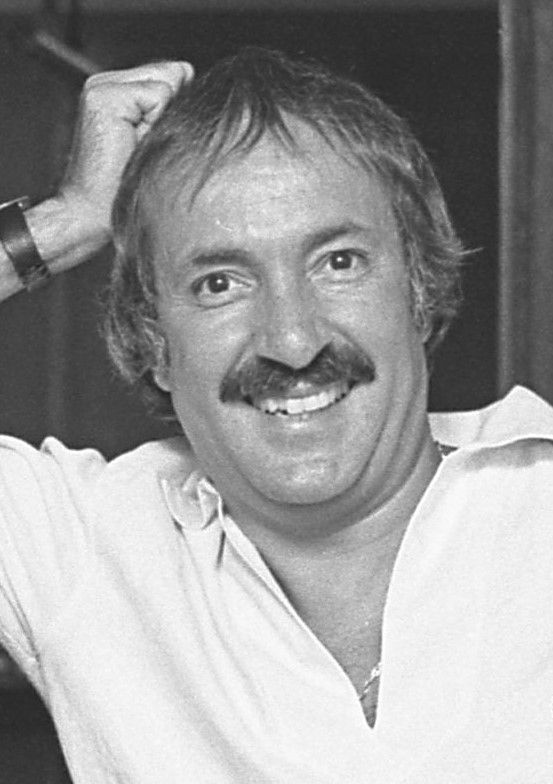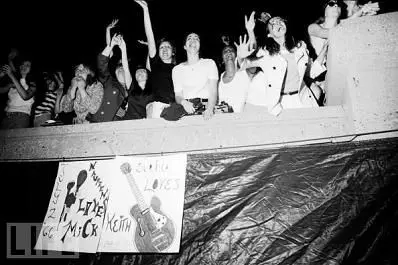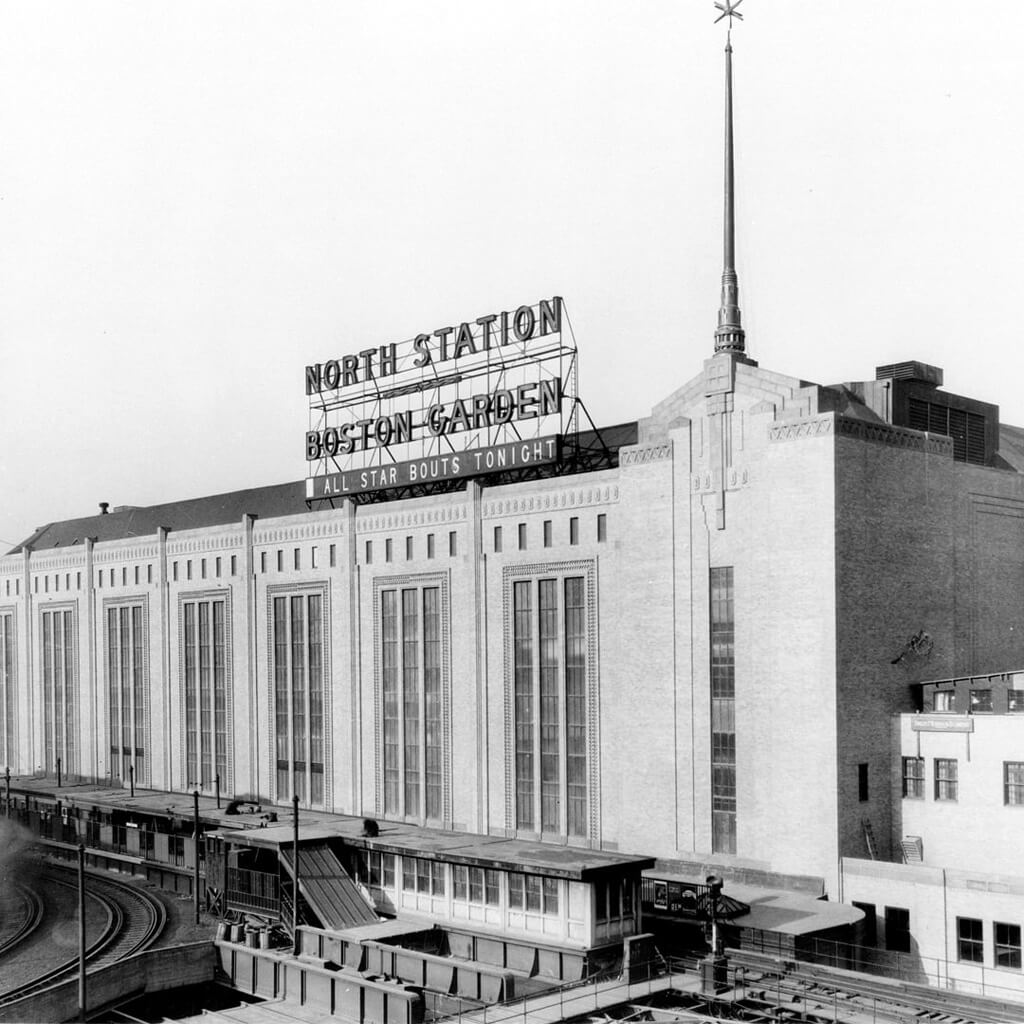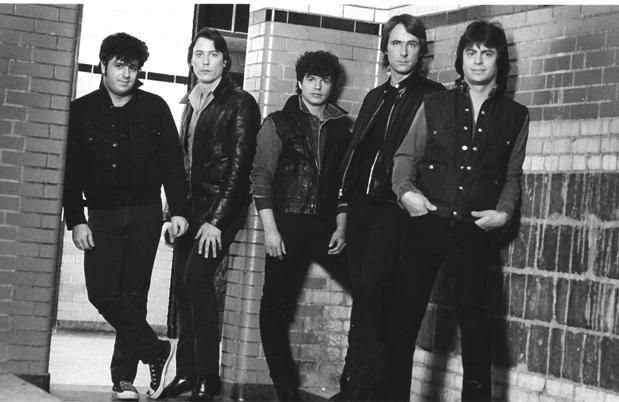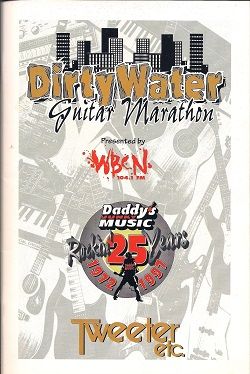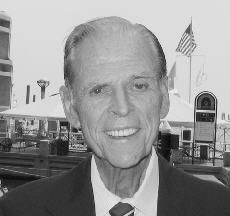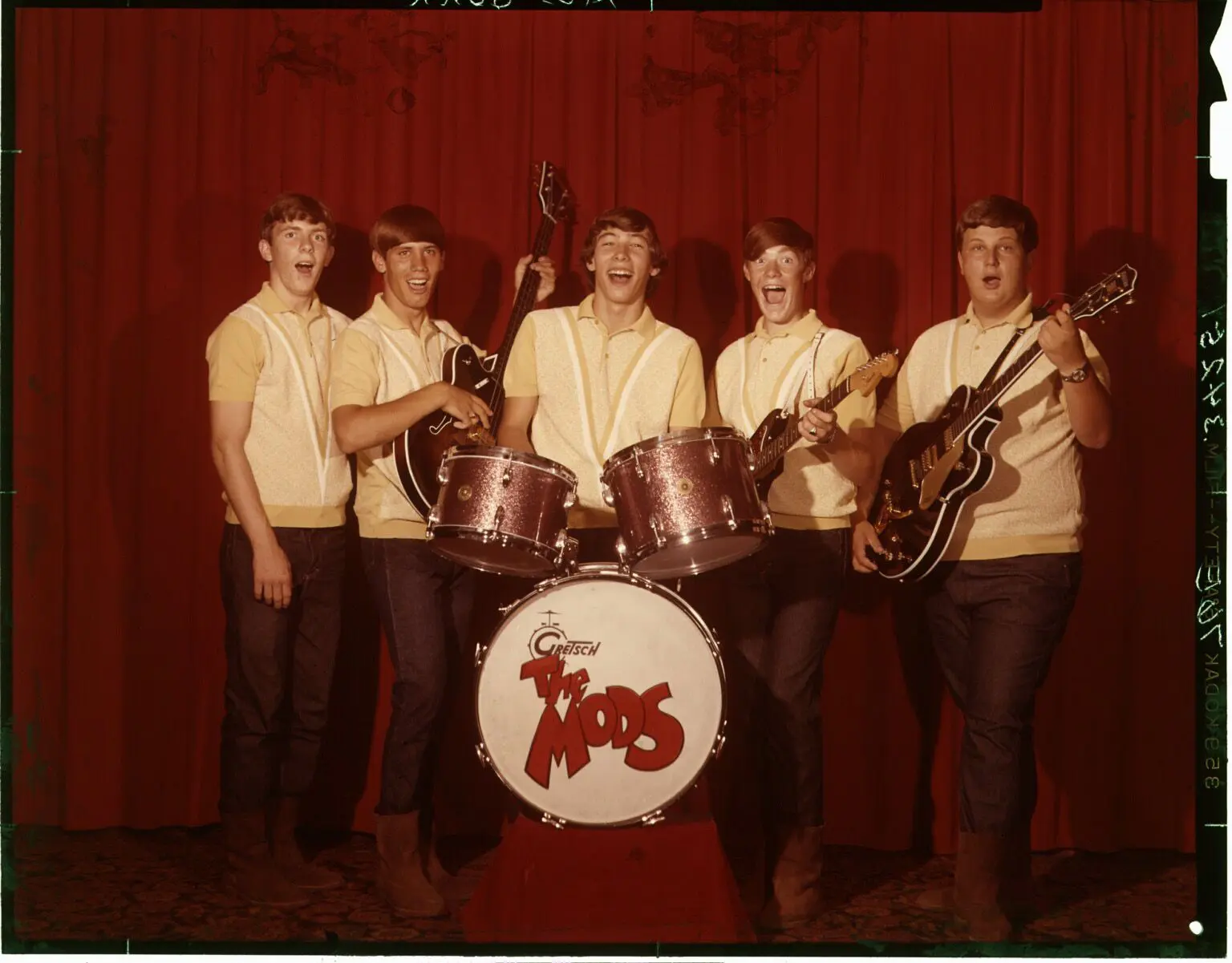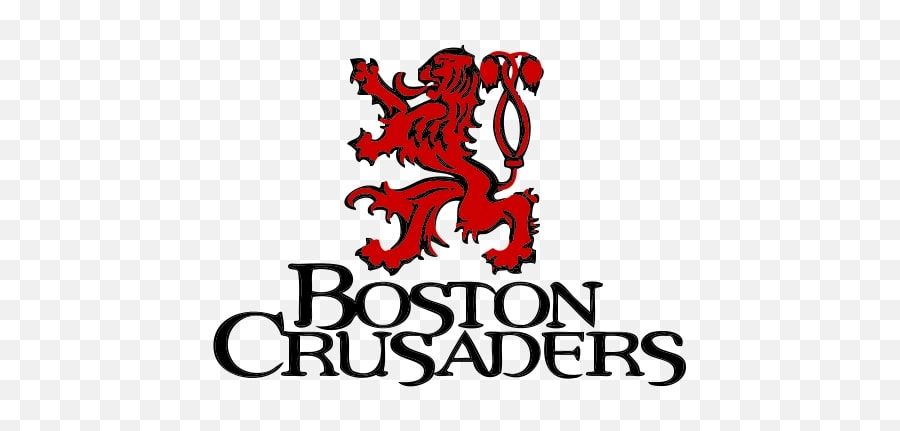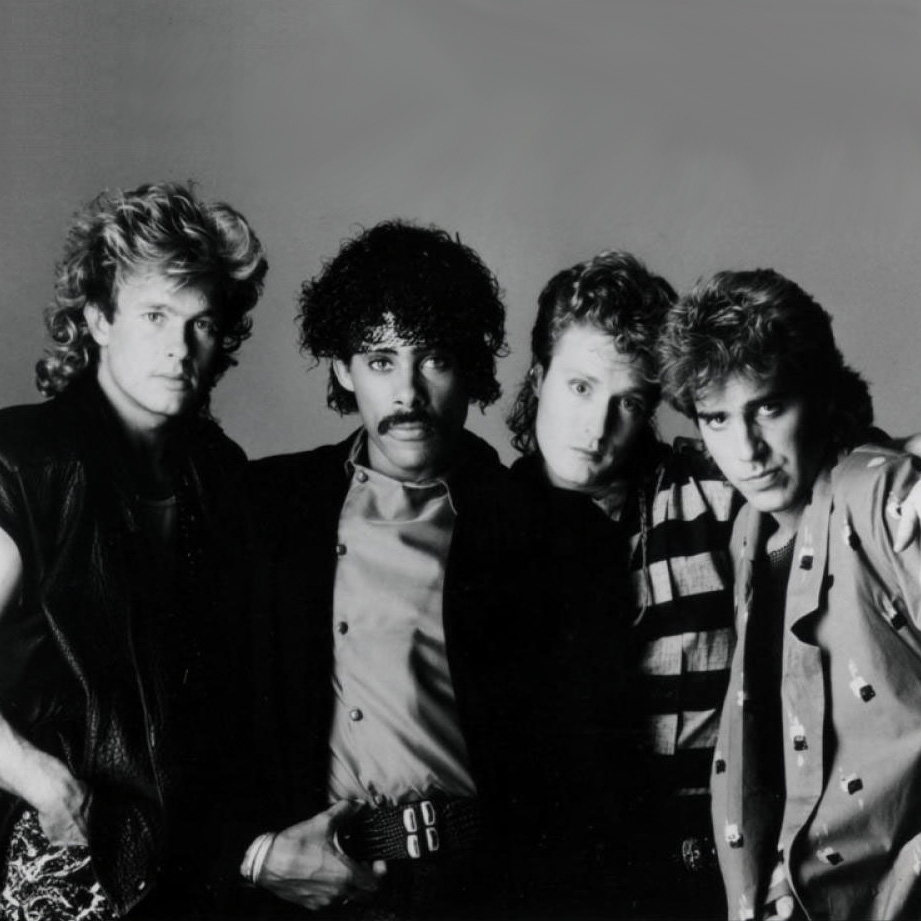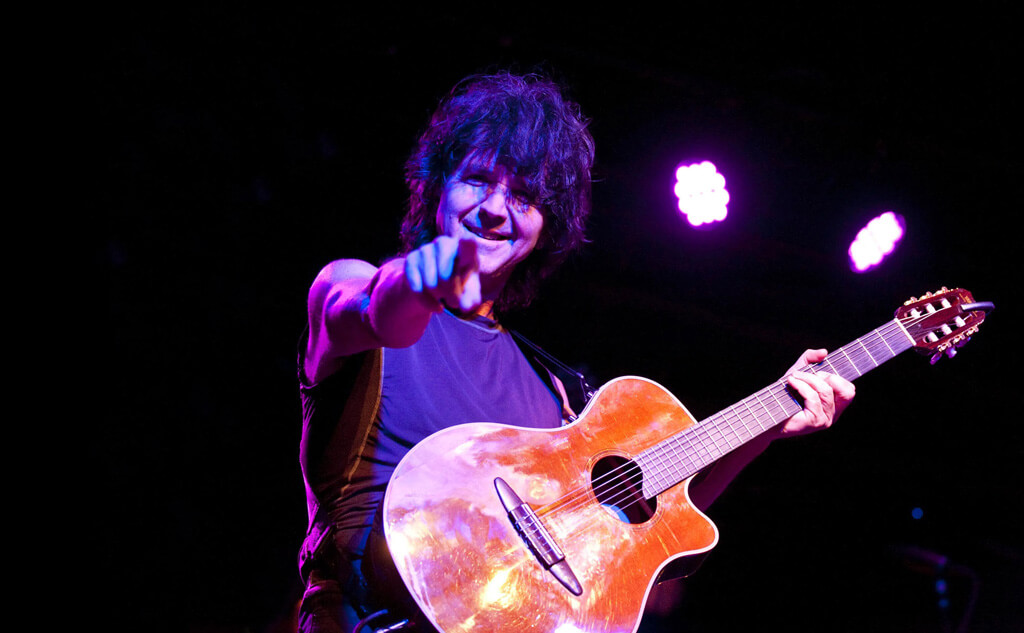Manning Bowl
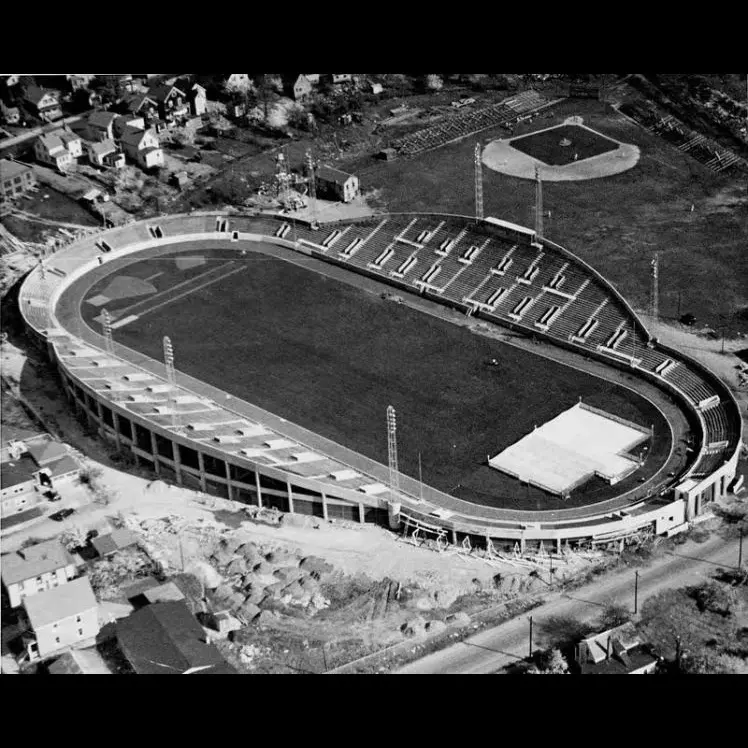
For many high-school football fans and a handful rock ‘n’ rollers, Manning Bowl’s nostalgic value rivals Boston Garden’s, their memories of both venues equally cherished. And while it was never a music mecca on nearly the same scale as “the Gahden,” hosting very few concerts by comparison, some shows held at Manning became a significant part of New England’s musical history and the venue’s place in the region’s multigenred musical legacy is undeniable.
Like Fenway Park, the Lynn, Massachusetts, outdoor stadium was almost entirely sports-focused, but globally renowned acts including Ray Charles, The Beach Boys, Aerosmith and The Kinks appeared there. And there’s no doubt that The Rolling Stones’ quickly disrupted performance in June 1966 – set chronologically between their debut on The Ed Sullivan Show in October 1964 and the tragic events of their show at the Altamont Speedway Free Festival in December 1969 – was as memorable as any Stones show has ever been, in New England and elsewhere.
Opening, Cost, Naming, Capacity, First musical events
Opened on July 21, 1938, Manning Bowl was built as part of the Works Progress Administration for $500,000 (about $10.6 million in 2023) and designed to host football and soccer games. Named after Lynn Mayor J. Fred Manning, the 17,000-seat venue – which held 21,000 for concerts due to on-field seating (about 50% more than Boston Garden) – was the home field for teams from four local high schools (Lynn English, Lynn Classical, Lynn Tech and St. Mary’s), the Boston Rovers of the United Soccer Association in 1967 and the Bay State Titans of the Minor League Football System in 1990.
After hosting its first music-related event in the early ‘40s – a dance held in one of the stadium’s end zones – full-blown musical performances began in 1966 when the venue hosted the Drum & Bugle Corps World Open Championship featuring several corps from New England including the Boston Crusaders, who won the competition that year and in 1967. Manning Bowl hosted the event until 1982.
The Rolling Stones
On June 24, 1966, Manning Bowl hosted its first major rock concert, headlined by The Rolling Stones, and things didn’t go even half as smoothly as organizers, fans and the band had hoped. The Stones made the venue the first stop on their 31-city North American tour, with The McCoys, The Standells and Boston’s own The Mods as opening acts, and everything was fine until 10 songs into their set when it started raining and the crowd surged toward the flimsy stage.
As dozens began breaching the barriers, police fired tear gas, the band rushed off stage, sped off in a waiting van and the show was over. The mayhem made headlines across the globe, putting both Manning Bowl and the city of Lynn on the international rock ‘n’ roll map, with Mick Jagger referring to the show as “a bit of an outdoor crazy” and telling reporters that the venue “wasn’t well secured.”
1970s, 1980s
A decade later, on June 11, 1976, a thoroughly peaceful crowd watched as Ray Charles’ performed a charity concert at the stadium for the Life Institute for the Blind. Also on the bill were The Four Tops and blues/gospel singer Dorothy Moore. In the mid-‘80s, Manning hosted several major acts, starting in September 1984 when The Beach Boys played a sold-out show (with The Stompers as opener). In August 1985, Mötley Crüe performed (with heavy metal bands Accept and Y&T as openers) and in September The Kinks made an appearance with Jon Butcher Axis as opener. One week after The Kinks’ show, Jon Butcher Axis played Manning again, on a double bill with Farrenheit.
Aerosmith
But the most sought-after tickets for a Manning Bowl gig in 1985 were those for Aerosmith, who appeared on September 14 on their Done with Mirrors tour, their first after being signed to Geffen Records by Worcester native Al Coury, the label’s general manager, who took a risk on the notoriously substance-abusing band when other labels would not.
Reviews of what the media called the band’s “hometown comeback concert” were mixed – The Salem Evening News’ Tripp Robbins calling the performance “uninspired and dull” but another critic claimed the band played “better than they have in years” – but regardless of critical response, the group cemented their historic return to the top of rock ‘n’ roll mountain with their next album, 1987’s Permanent Vacation, by far their best-selling album in over a decade.
Disrepair, Demolition
By the end of the ‘90s, Manning Bowl was in serious disrepair. Night games were suspended because of electrical issues and city inspectors closed the north-side stands due to extensive cracking and crumbling of the stadium’s concrete shell. “Keep Out” signs hung across various sections of the venue along with netting to restrict access to seats, and some deterioration was so extensive in parts of the stadium’s steel skeleton were exposed. Football-sized pieces of concrete littered the grounds.
In September 2004, Lynn Mayor Edward J. “Chip” Clancy announced that the city had decided to demolish Manning Bowl, calling it “foolhardy” to renovate such a “functionally obsolescent” stadium and confirming that it would be replaced by a multipurpose facility with synthetic grass at the same location. In 2005, Manning Bowl was demolished, replaced by Manning Field in 2008 on the same site.
Local significance
In 2006, Bob Keaney, who was sports editor at The Lynn Sunday Post during the venue’s heyday and in the audience at the Stones’ legendary 1966 show, talked about Manning Bowl’s unique significance to residents of Lynn and the surrounding communities, making an obvious-but-noteworthy comparison to the Garden, which was demolished in 1998. “In a sense, it’s like when Boston Garden came down,” he said. “It was very hurtful for the loss of the memories and the tradition of the place.”
(by D.S. Monahan)

